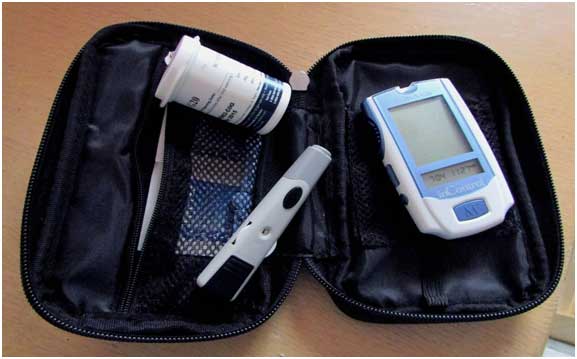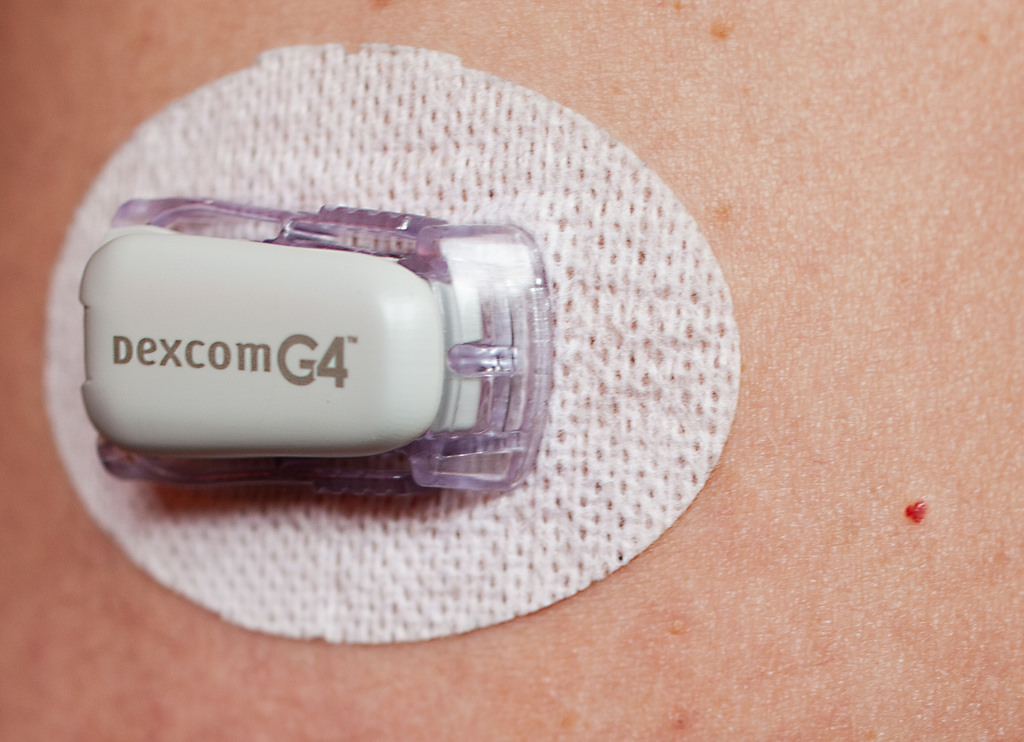Treatment of Type 1 Diabetes
When you or your child is initially diagnosed with type 1 diabetes, understanding the disease, managing with medications and diet, and knowing complications are very important to prevent any serious short-term or long-term complications.
All patients with type 1 diabetes should follow intensive diabetes therapy.
Intensive diabetes therapy includes strict diet and exercise or activity level along with Insulin injections and frequent monitoring of blood glucose levels. Both in children and adults, the goal of management is to maintain glucose control as near to normal as safely possible (ie, balance the risks of long-term complications of diabetes and hypoglycemia). As per American Diabetes Association (ADA) guidelines, the recommended target for Hb A1c is less than 7% in adults and < 7.5% for children and adolescents.
There are 4 key aspects to the management of type 1 diabetes:
1. Blood sugar testing
Finger stick monitoring:
The finger stick test is done by placing a drop of blood from a skin prick of the finger onto a test strip and then inserting the strip into a glucose meter, a small gadget that gives you a read out of the blood glucose level.
Ideally, testing at home should be done four to seven times daily (before breakfast, mid-morning, before lunch, mid-afternoon, before the evening meal, before bedtime, and occasionally at 3 AM). Additionally, it is useful to test blood glucose levels at intervals after certain meals and before, during, and after exercise.

Continuous glucose monitoring (CGM):
For those who can’t have their skin pricked several times a day, may opt for CGM. This is a device that records glucose levels throughout the day. The CGM works through a sensor inserted under the skin that measures interstitial glucose levels (the glucose found in the fluid between cells) at regular intervals.
The CGM sends the current glucose level wirelessly to a pump or a separate monitor that you carry or wear in a pocket, a backpack, or a purse. When glucose levels are too high or too low, the CGM warns you with an alarm. CGM may not be right for everyone. You need to check with your healthcare provider if CGM is right for you.

2. Diet and Exercise
Diet for Type 1 Diabetes:
Carbohydrate counting and carbohydrate consistency
Variations in food intake, particularly carbohydrate intake, can result in erratic blood sugars and hypoglycemia in patients with type 1 diabetes. Intensive insulin regimens, which combine a basal insulin with short-acting premeal insulins, do allow for some flexibility in the carbohydrate content of meals.
For patients receiving fixed doses of short- and intermediate-acting insulin, however, day-to-day consistency in the amount of carbohydrate and source of carbohydrate at meals and snacks is more important.
For more information on this click Carb counting
Exercise recommendations:
Physical activity is the key to controlling blood sugars and to prevent complications from diabetes. Your muscles use sugar (glucose) for energy when you exercise. Regular physical activity also helps your body use insulin more efficiently. In general, most adults should exercise at least 30 minutes a day on most days of the week. For more information on exercise, click www.fightdiabetes.com/diabetes and exercise
3. Insulin injection
When you start taking insulin, it may take some time to adjust to the right dose. Your healthcare provider will help to adjust your dose over time. It is important to check your blood sugar level several times a day during this time. Learn more about Insulin injection from Pros-Tips for Insulin Injection
Insulin needs often change over your lifetime. Changes in weight, what you eat, health conditions (including pregnancy), activity level, and work can affect the amount of insulin needed to control your blood sugar.
Insulin-to-carbohydrate ratio (IC ratio)
IC ratio focuses on adjustment of food, insulin, and activity based on patterns from detailed logs. The patient needs to record time of meals and snacks, the amount and type of food eaten, amount of carbohydrate consumed, insulin dose, physical activity, and blood glucose results.
The insulin requirement varies from person to person. You may not react to insulin like someone else. Generally for adults, one unit of fast-acting insulin can usually cover 15 grams of carbohydrate. But for a very young child, as little as 1/10 unit of fast-acting insulin might cover 15 grams of carbohydrate. A starting carbohydrate-to-insulin ratio can be estimated using the 450/500 Rule. This is useful only for patients with type I diabetes. Insulin to carbohydrate ratios can vary with time of day, and are affected by stress, illness, and variations in physical activity.
500 Rule for users of long-acting insulin such as Humalog or Novolog
Divide 500 by the total daily dose of insulin. The result is the grams of carbohydrate that are approximately covered by 1 unit of insulin.
Example: If a person takes 40 units a day of Humalog, the carb-to-insulin ratio is 1 unit of insulin for every 12.5 grams of carbohydrate. The equation is:
500 divided by 40 (total dose) = 12.5 (grams of carb covered by 1 unit of insulin).
450 Rule for users of regular short-acting insulin
Divide 450 by the total daily dose of insulin. The result is the grams of carbohydrate that are approximately covered by 1 unit of insulin.
4. Recognize and treat low blood sugar
If the patient were hypoglycemic (blood glucose < 70 mg/dL), then the patient would treat the hypoglycemia with 10 to 15 g of fast-acting carbohydrate for glucose levels of 51 to 70 mg/dL, and with 20 to 30 g of fast-acting carbohydrate for blood glucose levels =50 mg/dL. Retest 15 minutes after ingestion and repeat treatment as needed based on blood sugar levels. Once blood glucose is >70 mg/dL, the patient should use the appropriate insulin dose to cover carbohydrate intake at the meal.
If the meal following the hypoglycemic episode is going to be delayed, a snack containing another 15 grams of carbohydrate should be consumed. A pattern of over treating hypoglycemia can result in a greater than desired rise in blood glucose and increased calorie intake, resulting in weight gain.
Read more about managing low blood sugars here.
REFERENCES:
1. Simmons KM, Michels AW. Type 1 diabetes: A predictable disease. World J Diabetes. 2015 Apr 15;6(3):380-90.
2. http://www.nlm.nih.gov/medlineplus/diabetestype1.html